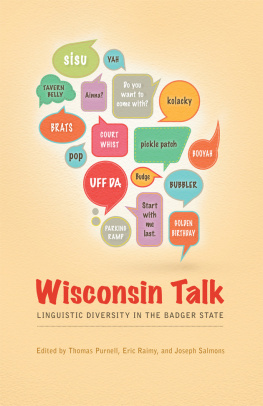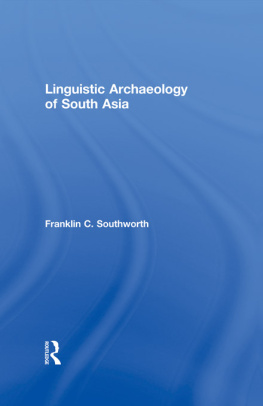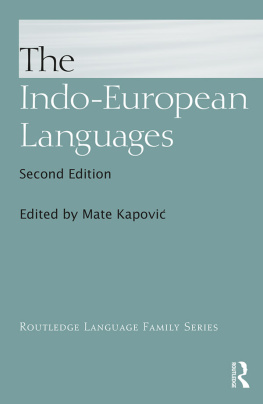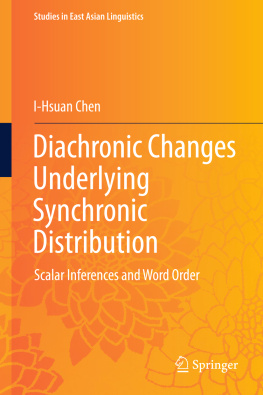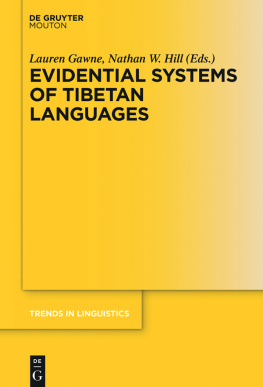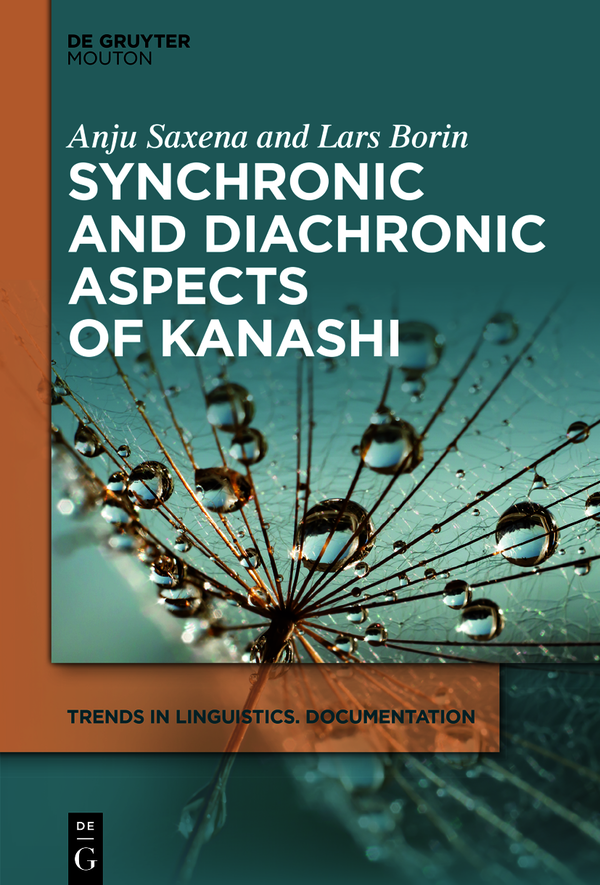Anju Saxena - Synchronic and Diachronic Aspects of Kanashi
Here you can read online Anju Saxena - Synchronic and Diachronic Aspects of Kanashi full text of the book (entire story) in english for free. Download pdf and epub, get meaning, cover and reviews about this ebook. year: 2022, publisher: De Gruyter, genre: Home and family. Description of the work, (preface) as well as reviews are available. Best literature library LitArk.com created for fans of good reading and offers a wide selection of genres:
Romance novel
Science fiction
Adventure
Detective
Science
History
Home and family
Prose
Art
Politics
Computer
Non-fiction
Religion
Business
Children
Humor
Choose a favorite category and find really read worthwhile books. Enjoy immersion in the world of imagination, feel the emotions of the characters or learn something new for yourself, make an fascinating discovery.

- Book:Synchronic and Diachronic Aspects of Kanashi
- Author:
- Publisher:De Gruyter
- Genre:
- Year:2022
- Rating:5 / 5
- Favourites:Add to favourites
- Your mark:
Synchronic and Diachronic Aspects of Kanashi: summary, description and annotation
We offer to read an annotation, description, summary or preface (depends on what the author of the book "Synchronic and Diachronic Aspects of Kanashi" wrote himself). If you haven't found the necessary information about the book — write in the comments, we will try to find it.
Kanashi, a Sino-Tibetan (ST) language belonging to the West Himalayish (WH) subbranch of this language family, is spoken in one single village (Malana in Kullu district, Himachal Pradesh state, India), which is surrounded by villages where - entirely unrelated - Indo-Aryan (IA) languages are spoken. Until we started working on Kanashi, very little linguistic material was available. Researchers have long speculated about the prehistory of Kanashi: how did it happen that it ended up spoken in one single village, completely cut off from its closest linguistic relatives? Even though suggestions have been made of a close genealogical relation between Kanashi and Kinnauri (another WH language), at present separated by over 200 km of rugged mountainous terrain, their shared linguistic features have not been discussed in the literature.
Based on primary fieldwork, this volume presents some synchronic and diachronic aspects of Kanashi. The synchronic description of Kanashi includes a general introduction on Malana and the Kanashi language community (chapter 1), linguistic descriptions of its sound system (chapter 2), of phonological variation in Kanashi (chapter 4), of its grammar (chapter 3) and of its intriguing numeral systems (chapter 5), as well as basic vocabulary lists (Kanashi-English, English-Kanashi) (chapter 9).
As for the diachronic and genealogical aspects (chapters 6-8), we compare and contrast Kanashi with other ST languages of this region (in particular languages of Kinnaur, notably Kinnauri), thereby uncovering some intriguing linguistic features common to Kanashi and Kinnauri which provide insights into their common history. For instance: a subset of borrowed IA nouns and adjectives in both languages end in -(a) or -(a)s, elements which do not otherwise appear in Kanashi or Kinnauri, nor in the IA donor languages (chapter 6); and both languages have a valency changing mechanism where the valency increasing marker -ja alternates with the intransitive marker -e(d) in borrowed IA verbs (again: elements without an obvious provenance in the donor or recipient language) (chapter 7). These features are neither found in IA languages nor in the WH languages geographically closest to Kanashi (Pattani, Bunan, Tinani), but only in Kinnauri, which is spoken further away. Intriguingly, traces of some of these features are also found in some ST languages belonging to different ST subgroups (both WH and non-WH), spoken in Uttarakhand in India and in western Nepal (e.g. Rongpo, Chaudangsi, Raji and Raute). This raises fundamental questions regarding genealogical classification, language contact and prehistory of the WH group of languages and of this part of the Indian Himalayas, which are also discussed in the volume (chapter 8).
Anju Saxena: author's other books
Who wrote Synchronic and Diachronic Aspects of Kanashi? Find out the surname, the name of the author of the book and a list of all author's works by series.

